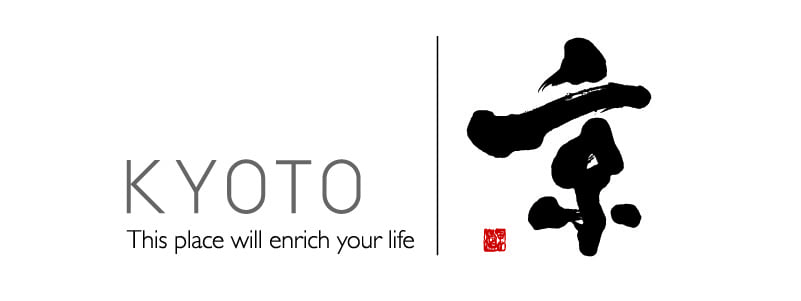Term archive
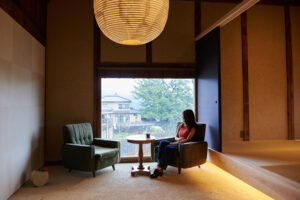
投稿タイプ:stay
MARU+JYU
Opened in September 2016, this guest house is a renovated 100-year-old former tea-processing house. While retaining the best of the original building, like its thick beams, the texture of soil has been used for the dirt floor and walls to bring out the atmosphere of a tea-processing house. Visitors can also experience traditional Japanese culture firsthand through the work of Kyoto lantern craftsmen, plasterers, lighting designers, etc. From the windows, you can see the rural scenery of Ujitawara and Mt. Jubu in the distance, and the stars spreading across the sky at night. It's an inn perfect for those who want to spend a quiet time enjoying the best of the seasons. There is also a cypress bath and kitchen, perfect for long stays.
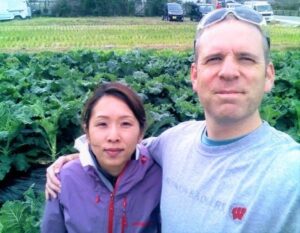
投稿タイプ:stay
Blodge Lodge
Blodge Lodge is recommended for you if you:
- Want to experience the quiet atmosphere in the midst of a tea field
- Are interested in hearing about immigration experiences (the host is a migrant)
- Would like to enjoy some conversation in English
Come enjoy a little homestay in a quiet environment surrounded by tea fields at this cozy bed and breakfast! All members of the family here are bilingual. (English/Japanese)
[Activity Information] Japanese tea tasting, tea ceremony experience, cooking experience, etc. (A separate fee is required for activities. Please inquire when you make your reservation.)
[Capacity] 2 groups per day. (7 people max.)
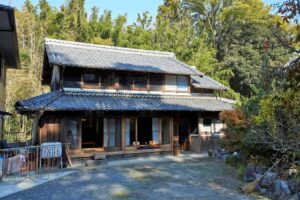
投稿タイプ:stay
The Tea Farm Guest House Enu To Enu
Opened at the end of July 2017, this farmhouse inn is an inn that only tea farmers can provide.
The inn's young proprietress, a member of the Kita family, who have been running tea farms for generations in the town of Wazuka, was at the center of the process, which started with remodeling their old private house to convey the charm of Wazuka and its tea.
Before dinner, you can experience tea harvesting in the tatami room, picking from the specially prepared tea branches.
The many dishes of the Japanese course to follow will also be made with tea, starting with tempura of the tea leaves you picked yourself, all prepared carefully and thoughtfully by the young Ms. Masako (the family's second daughters) for a complete course meal!
Guests can also taste different some of the over 20 (!) different types of tea that grow in the garden here, and hear about tea from Ms. Kyoko (the mother), a Japanese tea instructors, and Mr. Kazuo (the father), a tea producer.
Enu To Enu is an inn that's irresistible for tea lovers, where you can hear directly from tea farmers, as well as tour and experience the tea factory (for an extra fee).
In addition, you can also experience tea harvesting, tea factory tours, and black tea preparation for an additional fee.
A Japanese course made using tea is also available for lunch and dinner (3,500 yen).
*Only when there are no guests staying at the hotel.
Please see here to get an idea of the day-to-day at the inn:
https://www.facebook.com/kyototeafarmnton/
*Because we are tea farmers, the content of the activities on offer vary depending on the season.
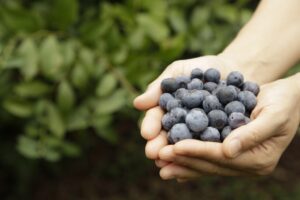
投稿タイプ:stay
Dosenbo Sanso
The village of Minamiyamashiro is located on the borders of Kyoto, Nara, Shiga, and Mie Prefectures. On the mountaintop, on a plateau at an elevation of 500m is a farmhouse inn that grows pesticide-free blueberries. From early August to late October, you can enjoy blueberry picking as you listen to the birdsong and the babbling of the stream in the fields above which fireflies dance. In winter, you can enjoy wild boar meat, homemade miso, and locally produced vegetables. Eat wild boar hot pot, which is made by boiling vegetables with natural mineral water from the local well. There are also many other gourmet foods that can only be found here, inclduing sukiyaki made with chicken and rich eggs from local breeds, carefully raised in the bountiful natural environment here; as well as lightly-seasoned pheasant hot pot.
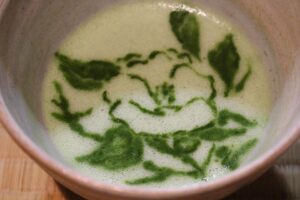
投稿タイプ:activities
Matcha Art Experience (Wazukacha Cafe)
At this matcha art activity, you can create a picture on matcha using matcha! Even just drawing lines to create patterns, or writing letters is fun. It's a unique tea experience that everyone from small children to adults can enjoy a taste of. After the activity, everyone can enjoy Japanese sweets and matcha.
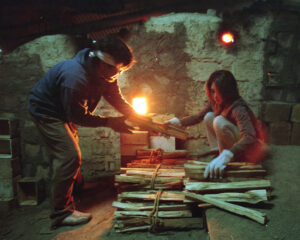
投稿タイプ:activities
Kyo-yaki Pottery/Kiyomizu-yaki Pottery Kiln Tour & Painting Experience (Sumiyama Pottery Village)
Tour a kyo-yaki/kiyomizu-yaki pottery (both local forms of Kyoto pottery) production studio and take part in a pottery-painting workshop. There are 10 different pottery rooms, and pottery on sale as well.
Paint on unglazed teacups, plates, etc.The finished pieces will be mailed to participants about 20 days after the workshop.
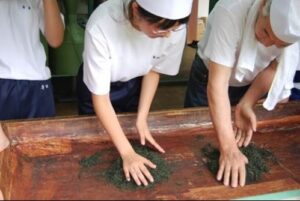
投稿タイプ:activities
Gyokuro Tea Hand-Kneading Experience (Fugenji Fureai no Eki)
The best gyokuro maker in Japan, Toshikazu Yamashita, and his students will teach you how to make gyokuro, the finest green tea. Gyokuro, which you will knead from raw tea leaves yourself during this experience, is truly one of the best in the world. You can also bring the kneaded tea leaves back with you, and a Japanese tea instructor will teach you how to brew the finest gyokuro.
Fugenji Fureai no Eki sells local goods directly from farmers, including fresh vegetables, fruit, flowers, tea, pickled goods, miso, and other processed products; as well as handmade bento lunches, bread, and sweets.
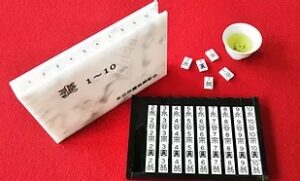
投稿タイプ:activities
Chakabuki Tea Tasting Experience (Soenkoyuan YANTAN)
Chakabuki is a kind of tea guessing game, in which participants try to remember the flavor of a tea they've drunk once, and determine which out of several teas was the same one they'd had before. This program is easy to understand, even for first-timers.
Soenkoyuan YANTAN is a rennovated former tea-processing factory located in Yuyadani in the town of Ujitawara, the birthplace of Japanese tea. Now, it is a heartwarming place of community, presented with the hospitality of the local people. You can find tourist information, special products such as tea on sale, and tea-related experiential programs to discover the area's charm. In addition to the tea and sweets at the coffee shop, you can also enjoy lunch made using local products on weekends.
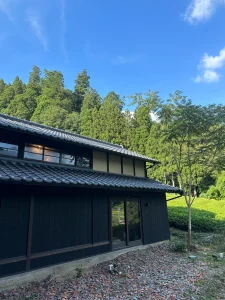
投稿タイプ:activities
Matcha farm Bed & Breakfast (farm-to-table meals and tour included.)
"Take in the tranquil tea fields of Wazuka, a hidden gem in Kyoto’s countryside, and immerse yourself in the world of organic, single-origin Japanese tea.
Their story
They opened Tea Moon, their Bed & Breakfast, to offer travelers the ultimate Japanese tea experience. Tea Moon overlooks d:matcha’s rolling tea fields and stands next to the 1000-year-old Hakusan Shrine. They renovated this traditional Japanese house in 2023, conserving its historic exterior while adapting it for modern comfort, as part of their mission to revitalize their historic green tea town.
The experience
They recommend to join their beloved farm tour & tasting . Guests who stay tea moon join at free.
…and have exclusive access to d:matcha’s multi-course farm-to-table meals (see images for sample menus). All dishes showcase local farmers’ ingredients and can be adjusted for dietary preferences.
Personalized activities (e.g., hiking, cooking classes, pottery tours) also available with advanced notice.
"
"Recommended itinerary for a relaxing long weekend
Property details
・2 bedrooms (western style queen beds)
・2 tatami mat living rooms
・Bathroom with a Japanese soaking tub & handmade tea soak
・Kitchen with new appliances (fridge, microwave, electric stove, pans, knives, plates & cutlery)
・Assortment of organic d:matcha tea
・Free wifi
・Free parking
"
"Policies
・3pm Check-in: Pick up keys from d:matcha Kyoto cafe (〒619-1203 Gonose 142, Yubune Wazuka-cho, Souraku-gun Kyoto-fu).
・11am Check-out
・Breakfast at 8:00am, Dinner at 6:00pm
・No smoking
・They welcome groups of 2-4 guests. Given the historical nature of the house, all guests must be over the age of 5. Please reach out with any questions.
・Free cancellation is available up to 14 days prior to the stay or within 24 hours of booking. After that, guests will forfeit the full cost of the stay. To cancel, email “info@dmatcha.com”"
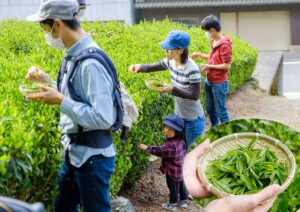
投稿タイプ:activities
Tea farm tour & tasting in Wazuka, Kyoto
Farm tour & tea flight with the passionate founder of d:matcha! Followed by tea-themed lunch overlooking their green fields in Wazuka, Kyoto, Japan. A unique deep dive into the world of Japanese tea.
Their experience runs from 9:30am to 1:15pm, and includes:
・Organic farm tour
・Tea picking → tea tempura
・Educational factory visit
・Tea flight (3 different cultivars of Sencha & Matcha) with sweets
・Lunch at d:matcha cafe (see images for menu)
Important logistics:
Tour begins at our cafe, in Wazuka, Kyoto Prefecture. Most international visitors arrive from Kyoto station (~60 min) or Nara station (~40 min), but you can also reach us from Shiga, Uji, and Osaka.
Daiki Tanaka, their founder, will conduct the tour himself (in English)!
They’re happy to accommodate dietary needs, please let them know of any.
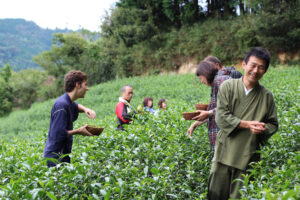
投稿タイプ:activities
Wazuka Town Japanese Tea Tour (Kyoto Obubu Tea Farms)
Enjoy a variety of activities in the town of Wazuka with English-speaking staff and tea plantation owners, including tours of the tea fields and production facilities, tea tasting and production, and tea harvesting events.
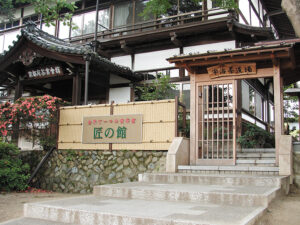
投稿タイプ:activities
Tea Brewing Experience (Takumi no Yakata)
Learn how to brew and savor delicious Uji tea while sharing information about the history, production process, and benefits of the three famous types of Japanese tea: gyokuro, matcha, and sencha.
Uji Tea Ceremony Hall Takumi-no Yakata was established by the Chamber of Kyoto Prefecture Tea as a place for training and exchange related to Uji tea for a broad range of people.
Visitors can relax with a cup of delicious Uji tea as they look out over the scenic Uji River.
Also in the neighborhood are the Tale of Genji Museum, as well as Byodo-in Temple and Uji-gami Shrine, both of which have been designated as World Cultural Heritage Sites. Visitors can drop in as they take a walk.
